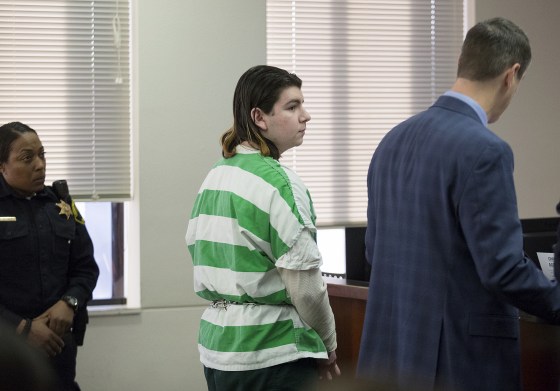A plot to attack Aces High School in Everett, Washington, was stopped three years ago when the grandmother of a student discovered that he had written something disturbing in his journal and called 911.
"He's planning to have a mass shooting at one of the high schools," she told the police.
The student, Joshua O'Connor, wrote that he wanted to make his attack famous.
"I need to get the biggest fatality number I possibly can," he wrote, according to the charges filed against him.
A search of his bedroom turned up a Hi-Point 9mm carbine rifle, the same model used in the 1999 shooting at Columbine High School in Colorado.
School officials called the grandmother a hero.
"She could very well have saved a number of lives, including her grandson's life," Andy Muntz, a spokesman for the school district, said at the time.
A Secret Service study released Tuesday of 67 school attack plans that were discovered and stopped over a dozen years found that in nearly every case, the plotters, like Joshua O'Connor, gave off distinct warning signs — most often, surprisingly, telling their friends what they were up to.
"They let other students know, and those around them, about their planning," said the report's author, Lina Alathari, a psychologist who leads the agency's National Threat Assessment Center. "They talked about wanting to carry out an attack. They selected dates and so on."
Among the warning signs, the report said, are a fascination with past violent attacks, an interest in weapons, suicidal thoughts and harassing behavior. Nearly half the plotters in the analysis were found to have been bullied by their classmates.
The Secret Service said that in many cases, students plotted their attacks for months, allowing ample time to stop them if schools know what to look for. In the 21 cases where a date for the earliest planning was found, 14 were planned for at least a month, with one student considering an attack for more than two years.
The level of planning can be quite detailed, Alathari said in an interview.
"There were students who were manufacturing explosives," she said. "They were doing research on websites on how to maximize casualties and how to acquire weapons."
The report said incidents of targeted school violence are preventable when communities identify and act on the warning signs.
"That should involve teachers, counselors, administrators, principals and school resource officers. Everyone has a role to play in prevention," Alathari said.

